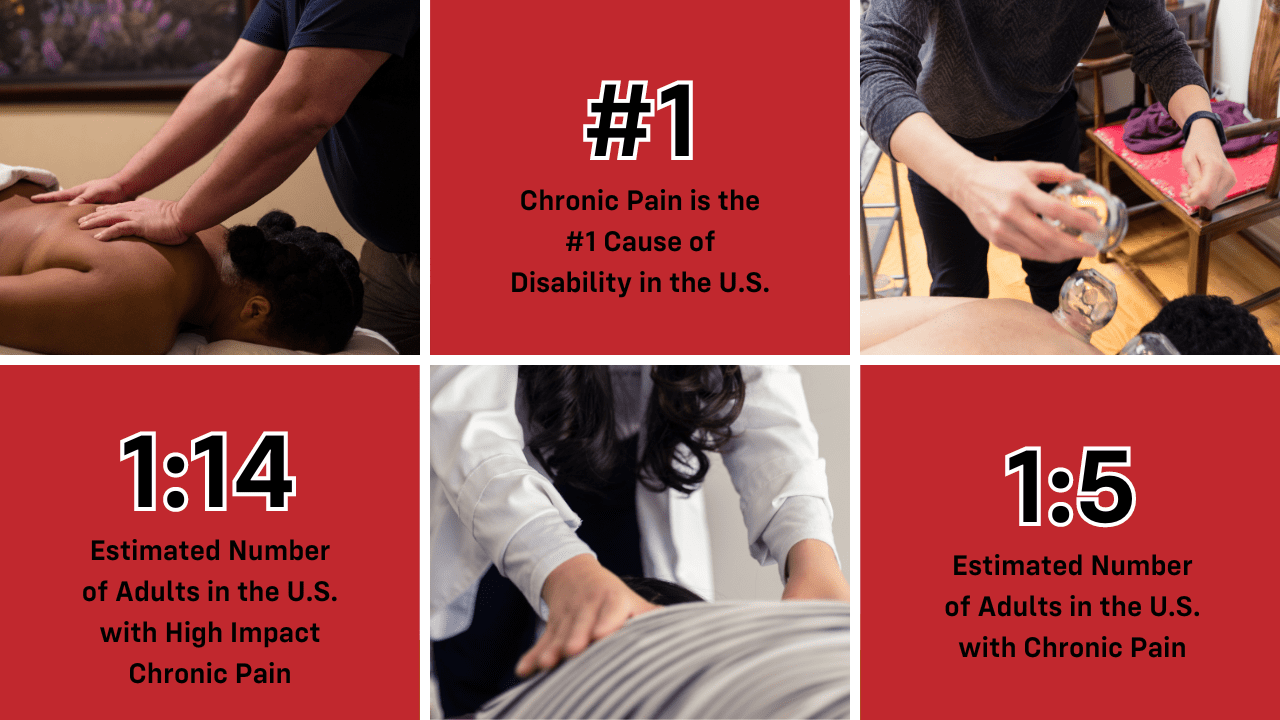Touching Chronic Pain
We know how effective chiropractic care, acupuncture and Chinese medicine, and massage therapy are for chronic pain patients. Now, more and more, major medical guidelines are catching up.
Most recently, the World Health Organization (WHO) released a guideline for non-surgical management of chronic primary low back pain. “This guideline is important in two regards,” explained Michele Maiers, DC, PhD, MPH, ‘00.
“First, it acknowledges the tremendous global impact back pain has on health and disability. This alone is significant, since WHO historically has focused on communicable diseases. Second, it recommends several therapies used every day in clinical practice by most of our NWHSU graduates, including spinal manipulation, acupuncture, massage, and exercise recommendations. These are in stark contrast to most pharmacological and psychological interventions, which were not recommended by WHO in these guidelines.”
With this in mind, we checked in with NWHSU alumni who advance chronic pain care every day, through research and private practice.
 Dr. Lillian Lee, Chiropractic Physician
Dr. Lillian Lee, Chiropractic Physician
“Seeing patients from when they’re in so much pain and unable to do their daily activities, to seeing their bodies heal and them being able to go back to what they do daily, it makes me feel so proud of the profession that I chose.”
Dr. Larissa Vados, Doctor of Acupuncture & Chinese Medicine
“Acupuncture and Chinese medicine can be so beneficial as a medicine, but also just listening to patients. A lot of times people, especially with chronic pain, get dismissed by the allopathic medicine world. With our form of medicine, we’re able to really spend time with people and hear them, and take the whole person into consideration.”
Jason Erickson, Massage Therapist
“I can really geek out about pain science and how to help people with chronic pain because I lived that life. I know what it’s like to be a patient and I want therapists to understand how to help those patients.”
Dr. Lynn Winkel, Chiropractic Physician
“Chronic pain is such a complex condition and often patients have difficulties receiving care. The opioid crisis has further created barriers. Research has shown that chronic pain care is a multifaceted condition which involves not only the physical aspect of low back pain symptoms, but also the psychological and social/emotional aspects as well.”
This story first appeared in CONNECT: NWHSU’s Alumni & Friends Publication

 Dr. Lillian Lee, Chiropractic Physician
Dr. Lillian Lee, Chiropractic Physician

